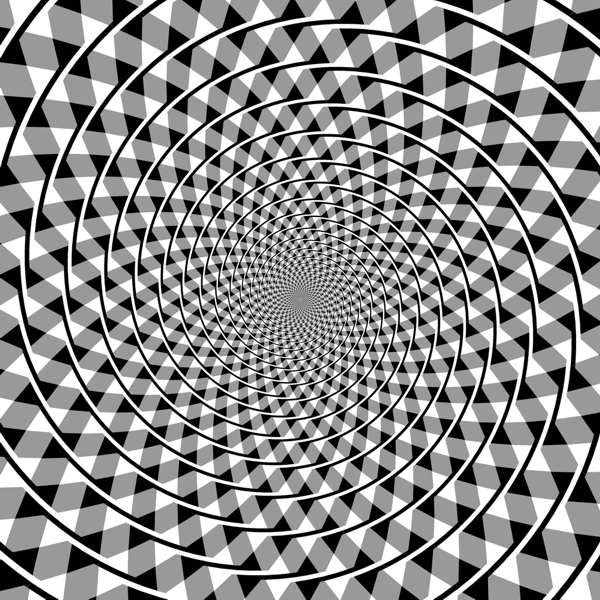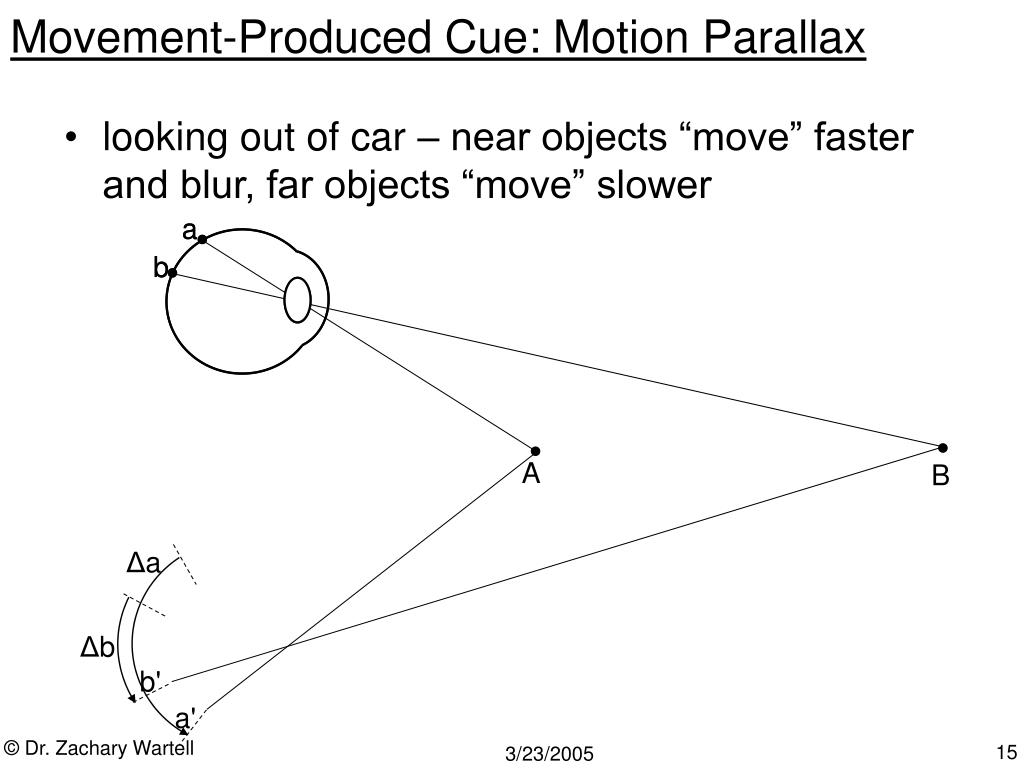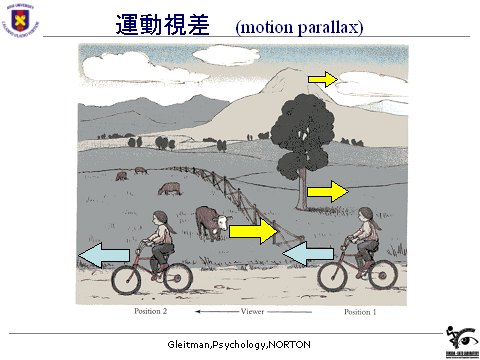

Stable estimation of surface albedo (lightness) in complex, three-dimensional scenes requires that the visual system effectively discount this spatially-varying light field.

The environment map for this illustration was obtained from. The light field recorded at a point in a forest scene. Lambertian bidirectional reflectance density function.
#MOTION PARALLAX PSYCHOLOGY DEFINITION PATCH#
We model matte surfaces as Lambertian: a small Lambertian surface patch absorbs light from all directions in a hemisphere centered on the patch, weighted by the cosine of the angle between the direction to the light source and the surface normal (See for details ).įigure 2. To fully specify the light field, we would need to specify a similar spherical map at every location within the scene. In Figure 2 we plot the light field at one point in a forest scene as a spherical intensity map. In this article we are concerned only with neutral (non-spectrally selective) lights and achromatic surfaces and, consequently, we can characterize a matte surface patch by its albedo and the light field as the intensity of light arriving at each point in the scene from every possible direction. Interpreted as part of the picture, they differ markedly in apparent albedo and apparent size. We superimposed two trapezoidal patches that are identical in albedo and size on the picture. To anticipate our conclusion, we find that added depth cues markedly alter lightness perception and lead to an increased degree of lightness constancy. The scenes all had strong gradients of illumination in depth.

We then report an experiment contrasting bi-ocular perception of three-dimensional scenes with viewing of identical scenes with binocular disparity and/or motion parallax cues to depth also available. Next we review the literature concerning lightness perception in three-dimensional scenes and examine what role specific depth cues play in experimental design. In this paper we first describe why the depth interpretation of a scene should affect surface lightness perception when the flow of light in the scene is not uniform. ) but there are also reports that viewing conditions have little or no effect on perceived color. There is some experimental evidence that perceived lightness under bi-ocular viewing conditions is different from perceived lightness in actual scenes (e.g. With scenes viewed “bi-ocularly” in this way, there is potential conflict between pictorial cues to depth and depth cues such as binocular disparity and motion parallax that are consistent with the flat surface of the picture viewed (the term “bi-ocular” refers to viewing conditions where the observer views a picture (a two-dimensional projection) of a three-dimensional scene with both eyes ). Much previous research concerning lightness perception makes use of stimuli that are effectively pictures of scenes, but viewed with both eyes. NIH EY08266 to LTM, for the design of the study and modeling.Ĭompeting interests: The authors have declared that no competing interests exist. The Global COE Program: Frontiers of Intelligent Sensing by MEXT Japan to HK, for research meetings. This is an open-access article distributed under the terms of the Creative Commons Attribution License, which permits unrestricted use, distribution, and reproduction in any medium, provided the original author and source are credited.įunding: Nissan Science Foundation to MK, for designing and conducting experiments, collecting data, and writing the manuscript. Received: ApAccepted: AugPublished: September 10, 2008Ĭopyright: © 2008 Kitazaki et al. PLoS ONE 3(9):Įditor: Bernhard Baune, James Cook University, Australia Citation: Kitazaki M, Kobiki H, Maloney LT (2008) Effect of Pictorial Depth Cues, Binocular Disparity Cues and Motion Parallax Depth Cues on Lightness Perception in Three-Dimensional Virtual Scenes.


 0 kommentar(er)
0 kommentar(er)
